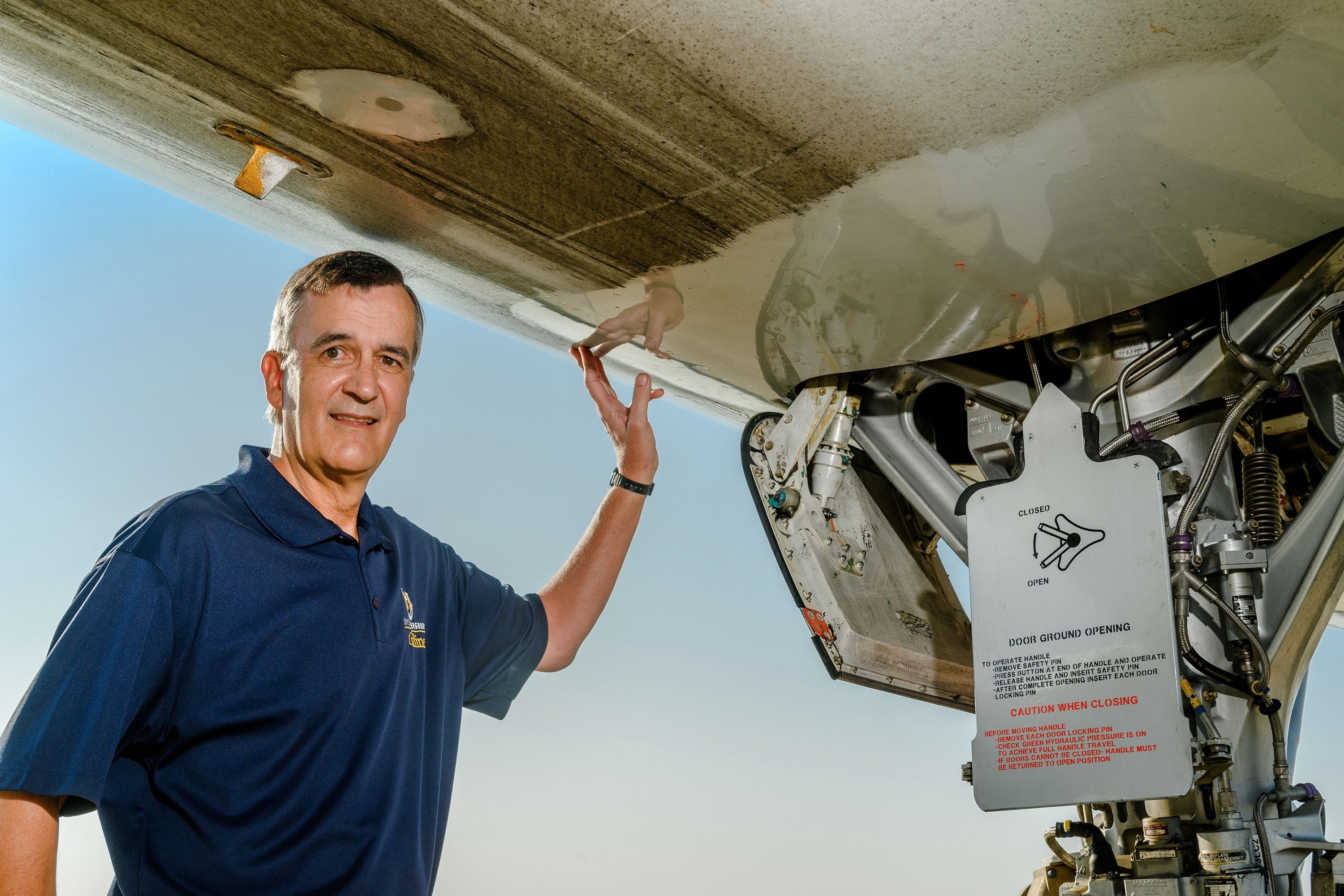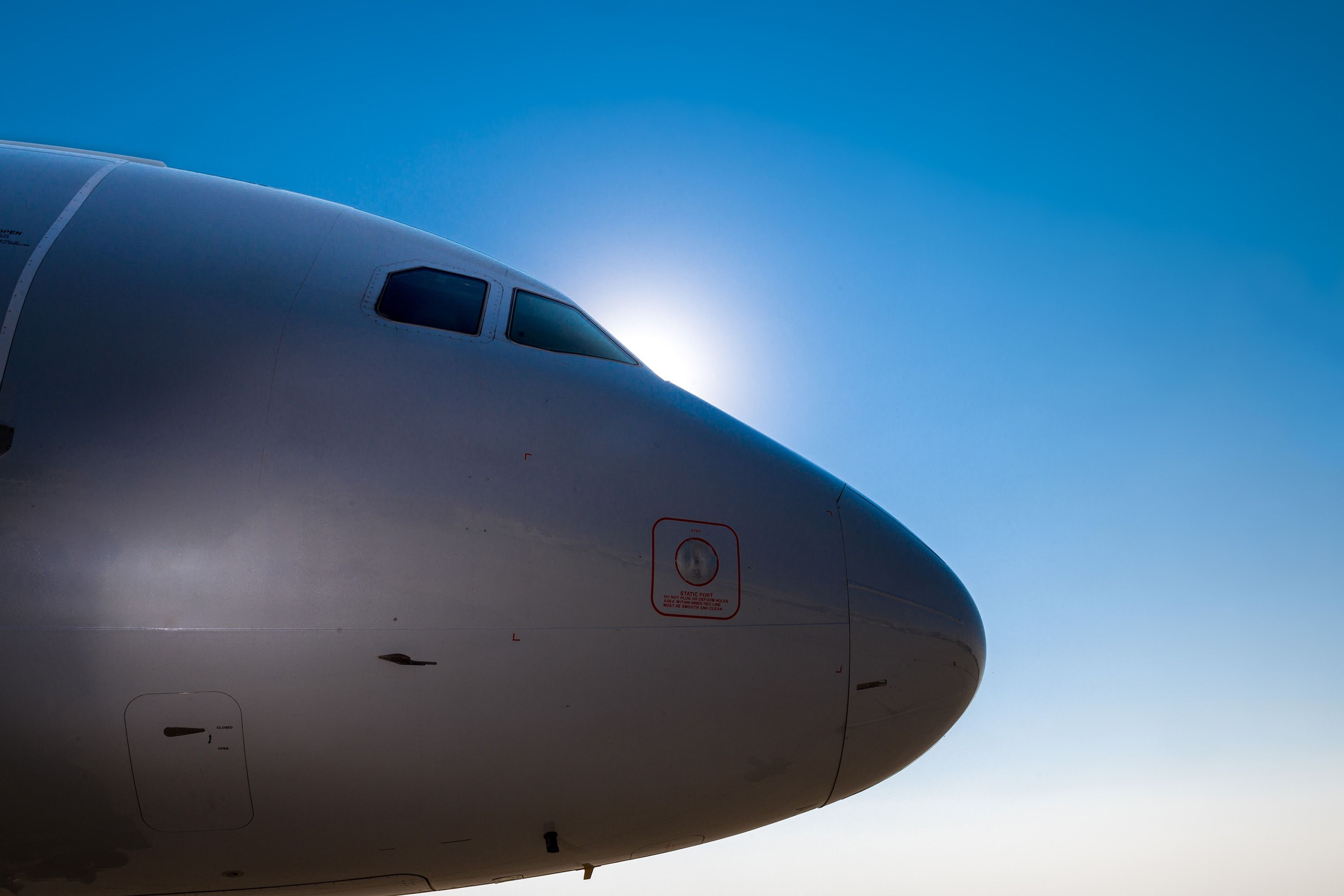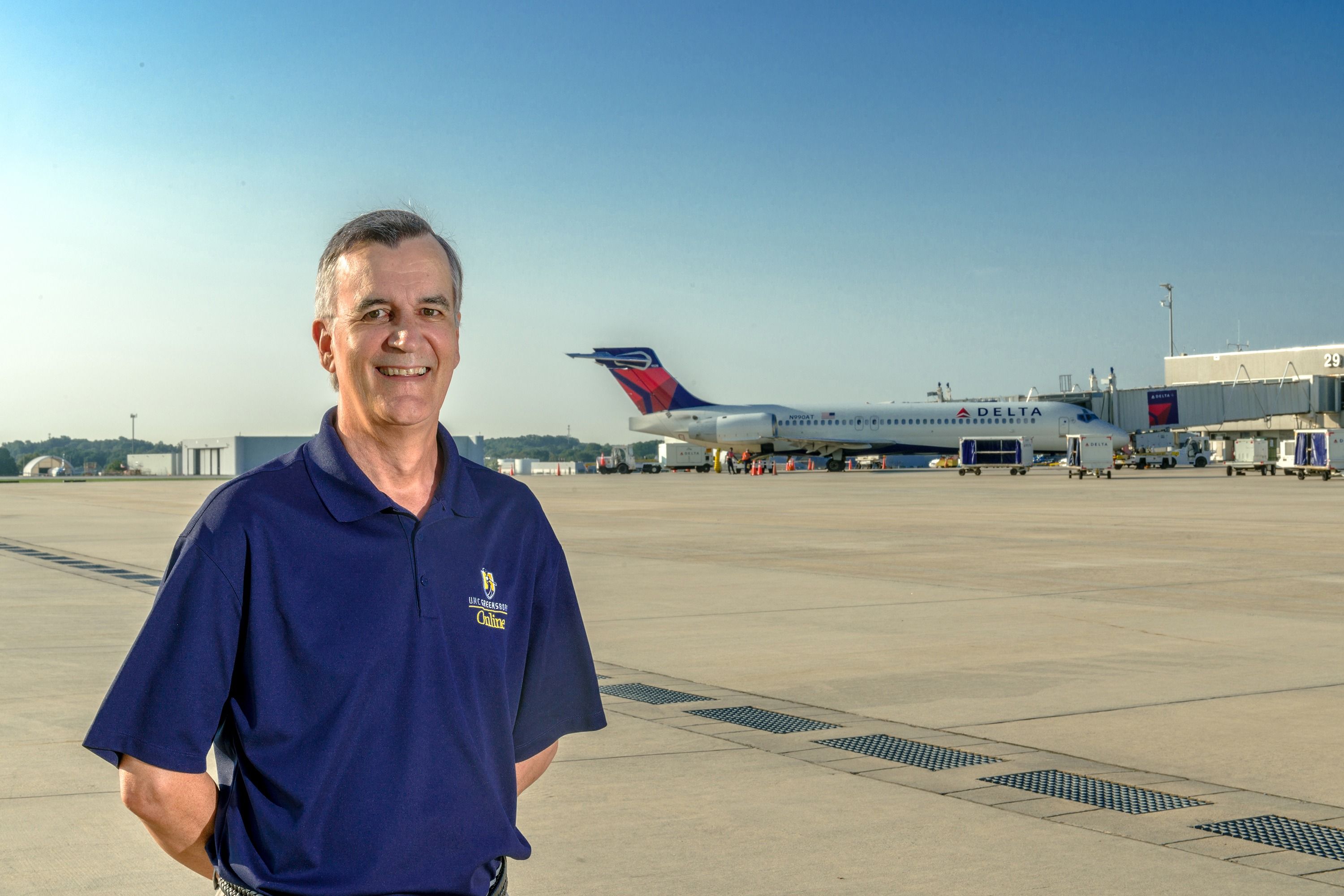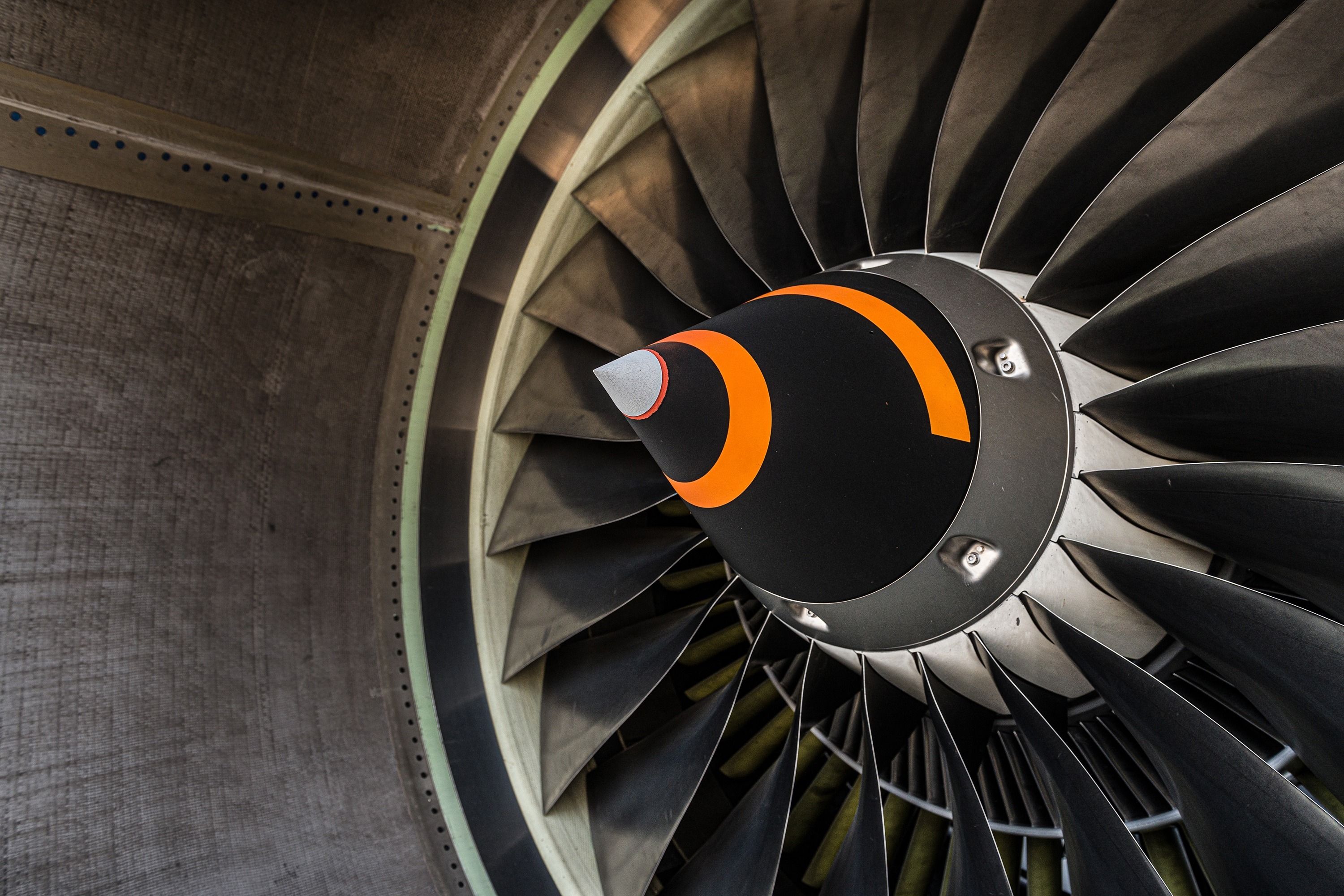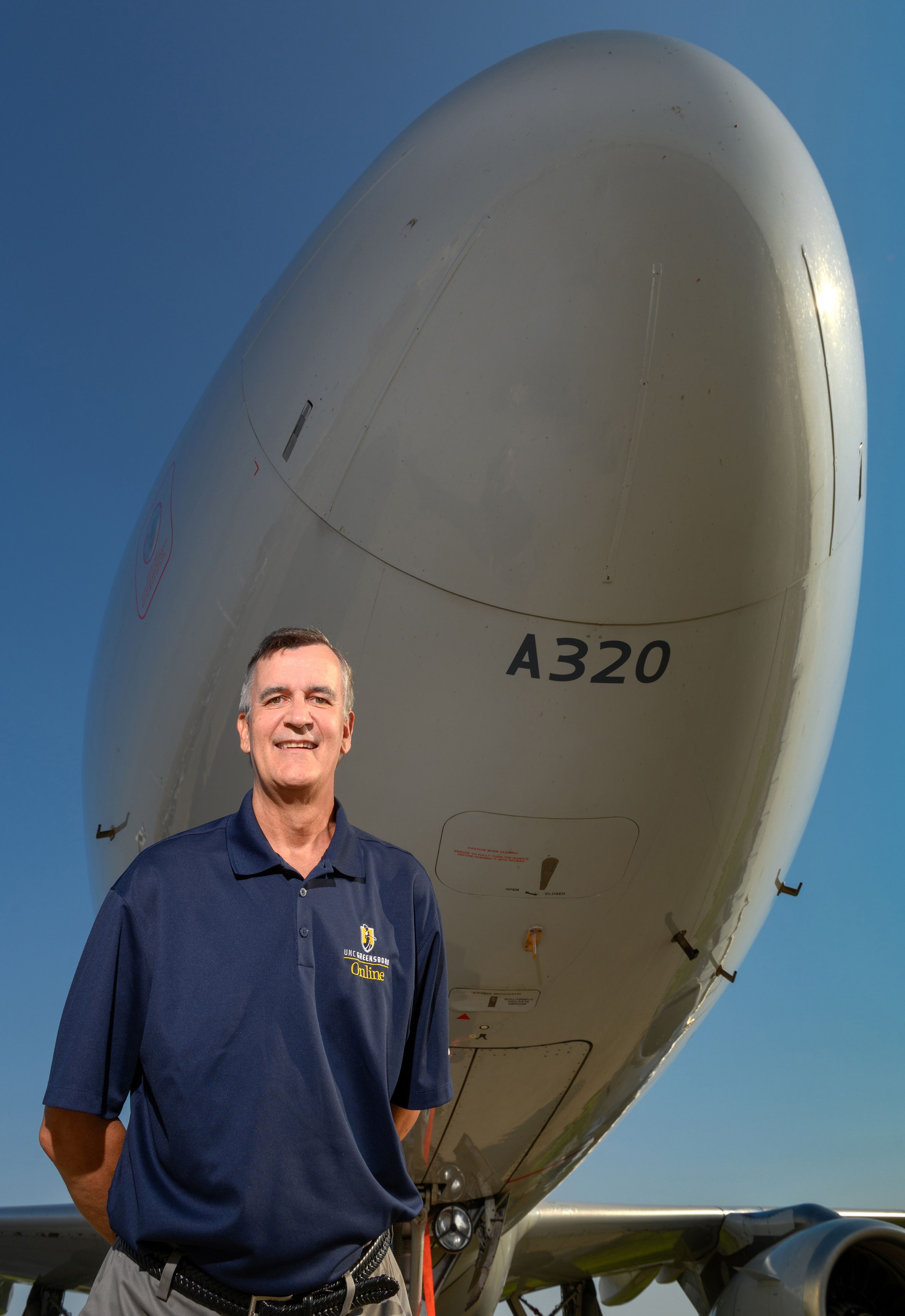
Debbage’s findings on flight’s carbon footprint have netted national media coverage and invitations to present his paper at conferences in Sweden and Dubai. He flew to the Middle East aboard an Airbus A380, “probably the biggest gas-guzzler, carbon-emitter civilian aircraft in the world,” he says. The irony is not lost on him.
When airplanes first caught Keith Debbage’s fancy, the term “carbon footprint” didn’t exist. It was the 1960s, and he was a kid happy to accompany his father to air shows on weekends. Never mind that watching planes was what his dad, a Royal Air Force radar operator, did at his day job. People who love flight never tire of planes.
Debbage is still a fan. Now, as a geography and entrepreneurship professor, he is able to combine his passion for flight with professional interests. The airline industry is one of his areas of study, and lately he’s been thinking a lot about one of the downsides of flight.
Jet aircraft are major polluters, and Americans – who love to travel – bear the responsibility for much of that pollution.
“Right now,” Dr. Debbage says, “about a fifth of the global carbon footprint from tourism is attributable to air travel.” Americans – just 4% of the global population – “account for 50% of all carbon dioxide emissions from airplanes worldwide.”
That sort of tidbit motivates a geographer to dig deeper. Or in this case, two geographers, both named Debbage.
Debbage’s son, Neil, is an assistant professor at the University of Texas at San Antonio. “He’s got a bigger green ethic than I do,” his father cracks. The younger geographer challenged his dad to work together on an examination of airline tourism’s carbon footprint, with the added goal of being published in a prestigious journal, the Annals of Tourism Research.
They did, and it was.
There’s been ongoing debate about whether direct flights are less polluting than itineraries with short hops and connecting flights. Often it’s a question of big planes versus smaller jets. Carbon footprint data exists for all sorts of commercial aircraft, from regional jets to the largest wide-body Boeing and Airbus planes. The Debbages looked at more than 1,000 flights originating from 10 major Northeastern airports destined for 13 popular destinations, mostly in the Sunbelt. They compared emissions generated by connecting routes vs. direct flights and found conclusive evidence.
“Bottom line is, direct routes are more green,” he says.
How green? The difference is about 100 kilograms of carbon, or about equivalent to the amount of energy needed to run a refrigerator for a year. That sounds pretty good, right?
But then there’s this: Scientists have determined that to keep global warming from exceeding 2 degrees Celsius, each person on earth must not consume more than 2,300 kilograms of carbon per year. Of that amount, 575 kilos are allocated for travel, including daily commutes and vacations.
The Debbages found a round trip between those Northeast and Sunbelt airports, even without connections, consumes “on average, two-thirds of an individual’s entire mobility budget for the year.”
It was a sobering revelation for a lifelong aviation fan. “Airline travel may be one of our worst environmental sins,” Debbage says. “It was really kind of shocking.”

When airplanes first caught Keith Debbage’s fancy, the term “carbon footprint” didn’t exist. It was the 1960s, and he was a kid happy to accompany his father to air shows on weekends. Never mind that watching planes was what his dad, a Royal Air Force radar operator, did at his day job. People who love flight never tire of planes.
Debbage is still a fan. Now, as a geography and entrepreneurship professor, he is able to combine his passion for flight with professional interests. The airline industry is one of his areas of study, and lately he’s been thinking a lot about one of the downsides of flight.
Jet aircraft are major polluters, and Americans – who love to travel – bear the responsibility for much of that pollution.
“Right now,” Dr. Debbage says, “about a fifth of the global carbon footprint from tourism is attributable to air travel.” Americans – just 4% of the global population – “account for 50% of all carbon dioxide emissions from airplanes worldwide.”
That sort of tidbit motivates a geographer to dig deeper. Or in this case, two geographers, both named Debbage.
Debbage’s son, Neil, is an assistant professor at the University of Texas at San Antonio. “He’s got a bigger green ethic than I do,” his father cracks. The younger geographer challenged his dad to work together on an examination of airline tourism’s carbon footprint, with the added goal of being published in a prestigious journal, the Annals of Tourism Research.
They did, and it was.
There’s been ongoing debate about whether direct flights are less polluting than itineraries with short hops and connecting flights. Often it’s a question of big planes versus smaller jets. Carbon footprint data exists for all sorts of commercial aircraft, from regional jets to the largest wide-body Boeing and Airbus planes. The Debbages looked at more than 1,000 flights originating from 10 major Northeastern airports destined for 13 popular destinations, mostly in the Sunbelt. They compared emissions generated by connecting routes vs. direct flights and found conclusive evidence.
“Bottom line is, direct routes are more green,” he says.
How green? The difference is about 100 kilograms of carbon, or about equivalent to the amount of energy needed to run a refrigerator for a year. That sounds pretty good, right?
But then there’s this: Scientists have determined that to keep global warming from exceeding 2 degrees Celsius, each person on earth must not consume more than 2,300 kilograms of carbon per year. Of that amount, 575 kilos are allocated for travel, including daily commutes and vacations.
The Debbages found a round trip between those Northeast and Sunbelt airports, even without connections, consumes “on average, two-thirds of an individual’s entire mobility budget for the year.”
It was a sobering revelation for a lifelong aviation fan. “Airline travel may be one of our worst environmental sins,” Debbage says. “It was really kind of shocking.”
Debbage’s findings on flight’s carbon footprint have netted national media coverage and invitations to present his paper at conferences in Sweden and Dubai. He flew to the Middle East aboard an Airbus A380, “probably the biggest gas-guzzler, carbon-emitter civilian aircraft in the world,” he says. The irony is not lost on him.

Green innovation
The most effective way to cut global airline industry carbon emissions is also the most drastic: Don’t fly. Since that isn’t a practical option, engineers, economists, and geographers are studying other ways that airlines can reduce their carbon footprints.
Strategies range from increased use of lightweight composite materials, such as those employed by Greensboro-based HondaJet in the airframe of its light business jet, to better aircraft engine design, to green fuels.
Green fuels, also known as biofuels, are sourced from plant-based and other organic materials. When burned, biofuels release drastically reduced amounts of carbon as compared to petroleum-based jet fuel.
Debbage and his son are writing a chapter on these trends for the upcoming “Handbook of Innovation for Sustainable Tourism.”
“Virgin Airlines and several U.S. carriers have already experimented with biofuels,” the elder Debbage says. Early results prove that large commercial aircraft can be powered by biofuels. “Right now, the goal is to elevate the share of aircraft that do that.”
Scandinavian Airlines, also known as SAS, is another carrier in the forefront of testing biofuels. “You can figure out why,” Debbage notes, “because it’s based in Sweden.” Greta Thunberg is not the only Swede with climate concerns.
Debbage expects it may be another decade before aircraft biofuels become widely adopted. The stakes are higher than in the automotive industry, which is rapidly transitioning to hybrid systems and electric power.
“The pace of change for aviation cannot be what it is for automobiles,” he says. “A fuel failure at 30,000 feet is catastrophic. Aviation is a much more delicate proposition.”
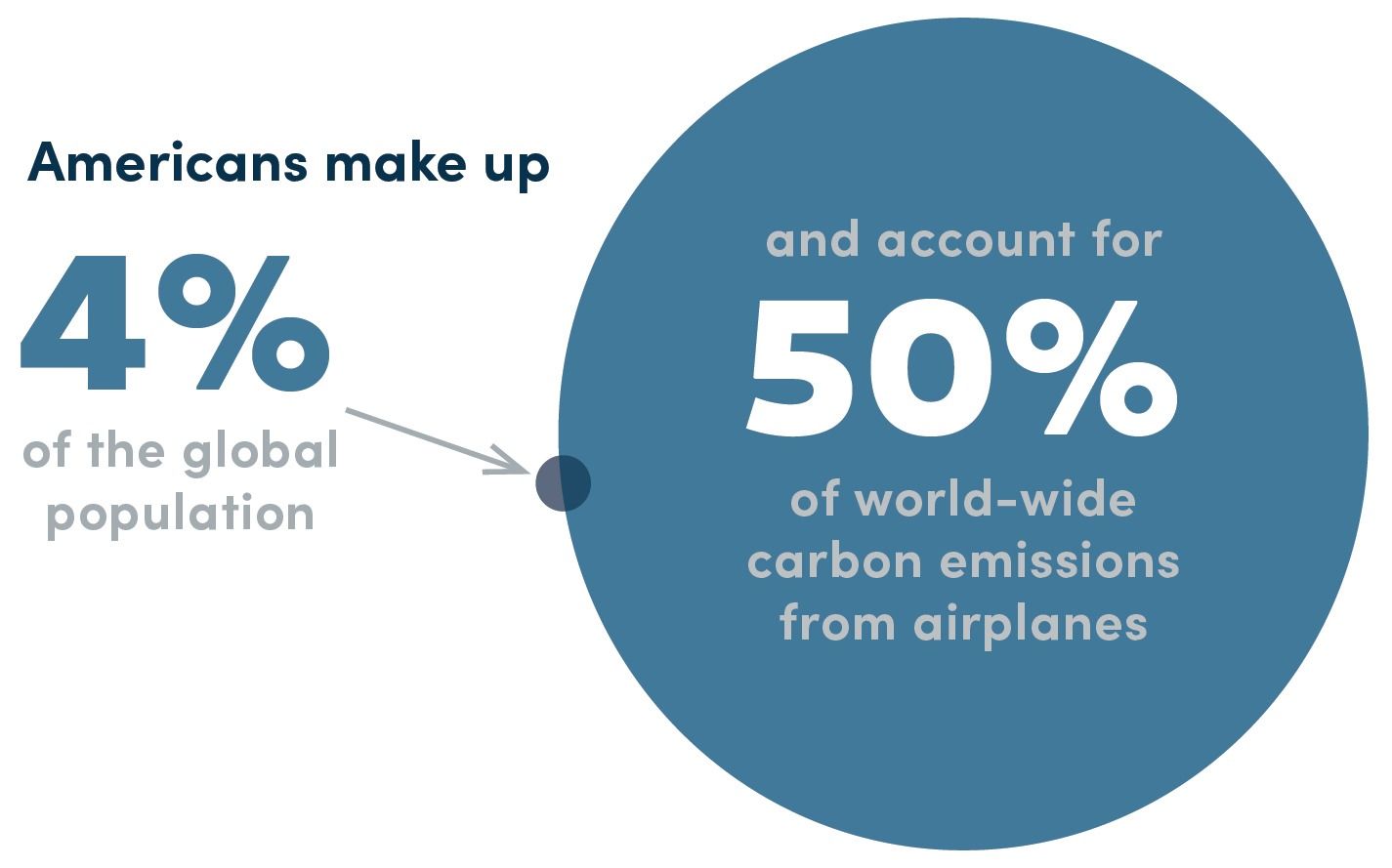
Innovation in the time of coronavirus. The industry is hard at work to make flight safer during the pandemic, says Debbage. “We have all kinds of weird and wonderful new seat configurations, for example, where the middle seat is inverted and has shields around it.”
Boosting regional development
Economic developers preach that an airport can be an economic driver for an entire region, attracting industry and spurring long-term job growth. Oftentimes that’s true. But sometimes it isn’t. Why the difference?
An ambitious project, led in part by Debbage, is sifting through economic, industrial, and demographic data in regions surrounding scores of airports nationwide to identify commonalities of success.
“It’s one of the most exciting things I’ve worked on,” Debbage says, “because I’m working with a big team of about 15 researchers.” They are part of a larger project managed by an airline industry consulting firm, with funding from the National Academies of Science.
The team will study air passenger traffic patterns, air cargo, types of industries and their proximity to the airport, as well as regional wage and salaries. All sorts of data go into the hopper. It’s a geographer’s dream.
Working in concert with Debbage is his colleague James Nelson, director of the Spatial Analysis Lab at UNCG. “He’s doing all the heavy lifting in terms of mapping airline and airport-related businesses,” Debbage says.
The group will also collaborate with airport managers to develop an assessment procedure. In the end, he says, airports, local governments, and economic developers will have a web-based tool to analyze the regional strengths of an airport and target specific industries for recruitment.
With the COVID-19 pandemic crippling air travel, the study has become even more critical.
“We hope to provide airports with a leg up as we come out of the pandemic and passenger traffic comes back,” Debbage says. “That’s my goal.”
Debbage, pictured here at Piedmont Triad International Airport, is a joint professor in the Department of Geography, Environment, and Sustainability and in the Department of Marketing, Entrepreneurship, Hospitality, and Tourism. This year he won the American Association of Geographer’s Kauffman Foundation Best Paper Award in Geography and Entrepreneurship. See more at UNCG Research Flickr.
